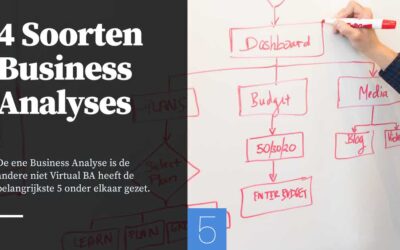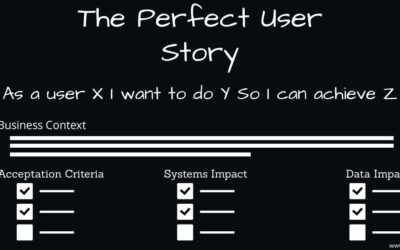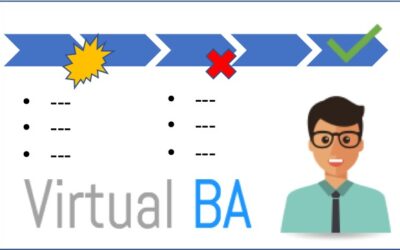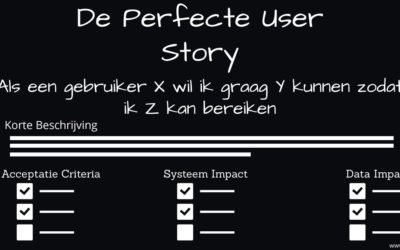In my last post, I shared how you can use ChatGPT to generate user stories. But did you know that ChatGPT is also highly effective for creating flowcharts, sequence diagrams, and other essential diagrams for Process Modeling?
Creating diagrams is a core skill for Business Analysts, and for many of us, it’s something we genuinely enjoy. So, automating it might not seem appealing at first. However, using ChatGPT for process modeling can offer surprising benefits.
Think about it: how often have you spent hours adjusting an arrow to go over or under another arrow without making the flowchart too complex? Or maybe you’ve completed a perfectly aligned diagram, only to realize you forgot a step and now have to figure out how to introduce the new element without tearing the whole structure apart.
On the flip side, how often have you thought, “Wouldn’t it be handy to have a flowchart or sequence diagram here?” but didn’t have the time to create one from scratch?
ChatGPT can help with this, though it’s not always as straightforward as generating user stories or other text-based responses. For instance, if you ask ChatGPT to create a flowchart for the lost cats and dogs platform I mentioned in the previous post—specifically for the onboarding journey of a pet owner who lost their dog—you might get something like this:

If you try asking it to use DALL-E for a visual representation, you’ll get something that looks nice but might miss important details. So, while it looks “nice”, it doesn’t always make complete sense.

While you were expecting something like this:

Or you can quickly generate a sequence diagram like this:

If the initial diagram seems too complex, you can refine it in just a few minutes to produce a polished, easy-to-follow sequence diagram.

If the initial diagram seems too complex, you can refine it in just a few minutes to produce a polished, easy-to-follow sequence diagram.
Because ChatGPT’s initial drafts are often visually not visual aligned, I recommend starting with a few drafts and then modeling the final version in your favorite process modeling tool.
In my next post, I’ll show step-by-step how to create effective flowcharts and sequence diagrams with ChatGPT—so stay tuned!
Lees meer in ons Blog
Het schrijven van User Stories met ChatGPT
Sommige mensen denken dat het schrijven van user stories hetgeen is waar Business Analisten (BA's) het meest van genieten. Per slot van rekening bestaat een groot deel van het werk van BA’s uit user stories, epics (grote verhalen), of soms PowerPoint-presentaties, die...
Omgaan met Wettelijke Requirements
u
Hoe je je Epics Episch maakt
Een Epic is een user story die niet binnen één sprint te ontwikkelen is, is een vuistregel die veel projecten hanteren om Epics te identificeren. Als je het mij vraagt ben je dan eigenlijk net te laat en mis je heel veel aspecten van een Epic waarmee je effectief je...
Type Business Analyses
3 Situaties die baat hebben bij een Business Analyse In dit artikel leg ik uit in welke situaties een Business Analyse toegevoegde waarde biedt en waarom. Digitalisering van bedrijfsprocessen Integratie van verschillende systemen Introductie nieuw product of...
10 Tips for creating perfect User Stories
Often it is believed that a perfect User Story is written like: “As a user X I want to do Y So I can achieve Z”. Some people also believe that this is all what needs to be written down for a development team to create the right results. Therefore, it is not surprising...
De 5 soorten analisten in het Digitale/IT domein
Een ruit is een vlieger maar een vlieger is geen ruit, dit zei mijn wiskunde leraar vroeger altijd. Waarmee hij bedoelde dat vormen op elkaar kunnen lijken maar dat de eigenschappen verschillend zijn. Deze filosofie is ook van toepassing op een Business Analist,...
5 Tips voor het effectief optimaliseren van bedrijfsprocessen
Klinkt natuurlijk wel lekker dat optimaliseren van bedrijfsprocessen. Maar hoe weet je nu eigenlijk dat je bedrijfsproces is geoptimaliseerd en wat is een bedrijfsproces eigenlijk. In dit artikel leg ik uit wat een bedrijfsproces is, hoe je weet dat het...
7 Fouten die veel Digitale en IT projecten maken.
Alle nieuwe ontwikkelingen en methodieken ten spijt. Digitale en IT projecten blijven keer op keer dezelfde fouten maken. Hieronder de belangrijkste 7 denkfouten: Requirement overslaan want dat is waterval Opstellen van oplossingsgerichte requirements Oplossing...
Why Digital and IT projects need Business Analysts
10 Tips voor de perfecte User Story
Als een gebruiker X wil ik zus en zo kunnen zodat ik dit en dat kan bereiken, is toch al bijna de perfecte User Story? Veel mensen denken dat een User Story alleen bestaat uit bovenstaande zinsconstructie. En dat gebruik van die zinsconstructie voldoende is om er voor...






